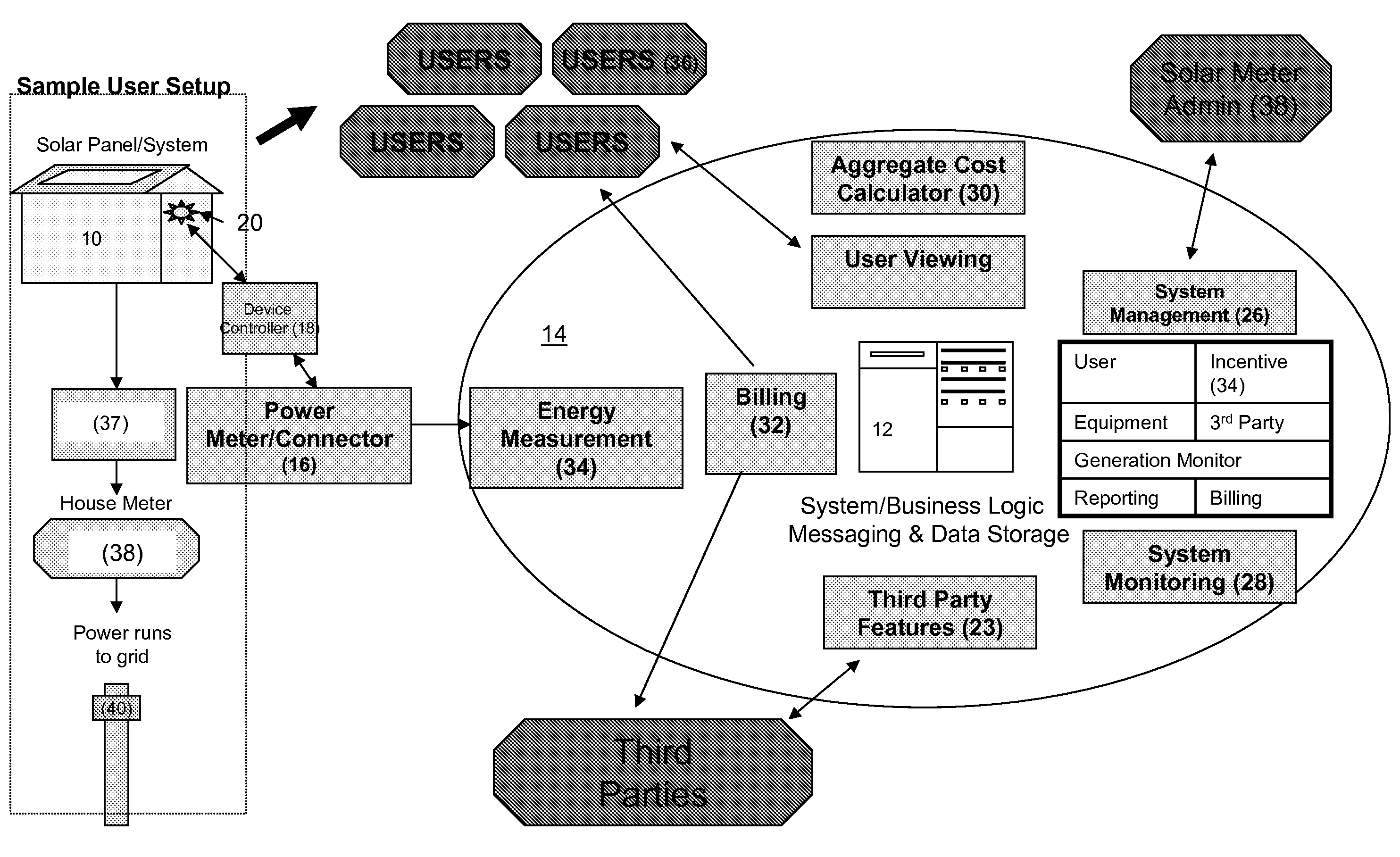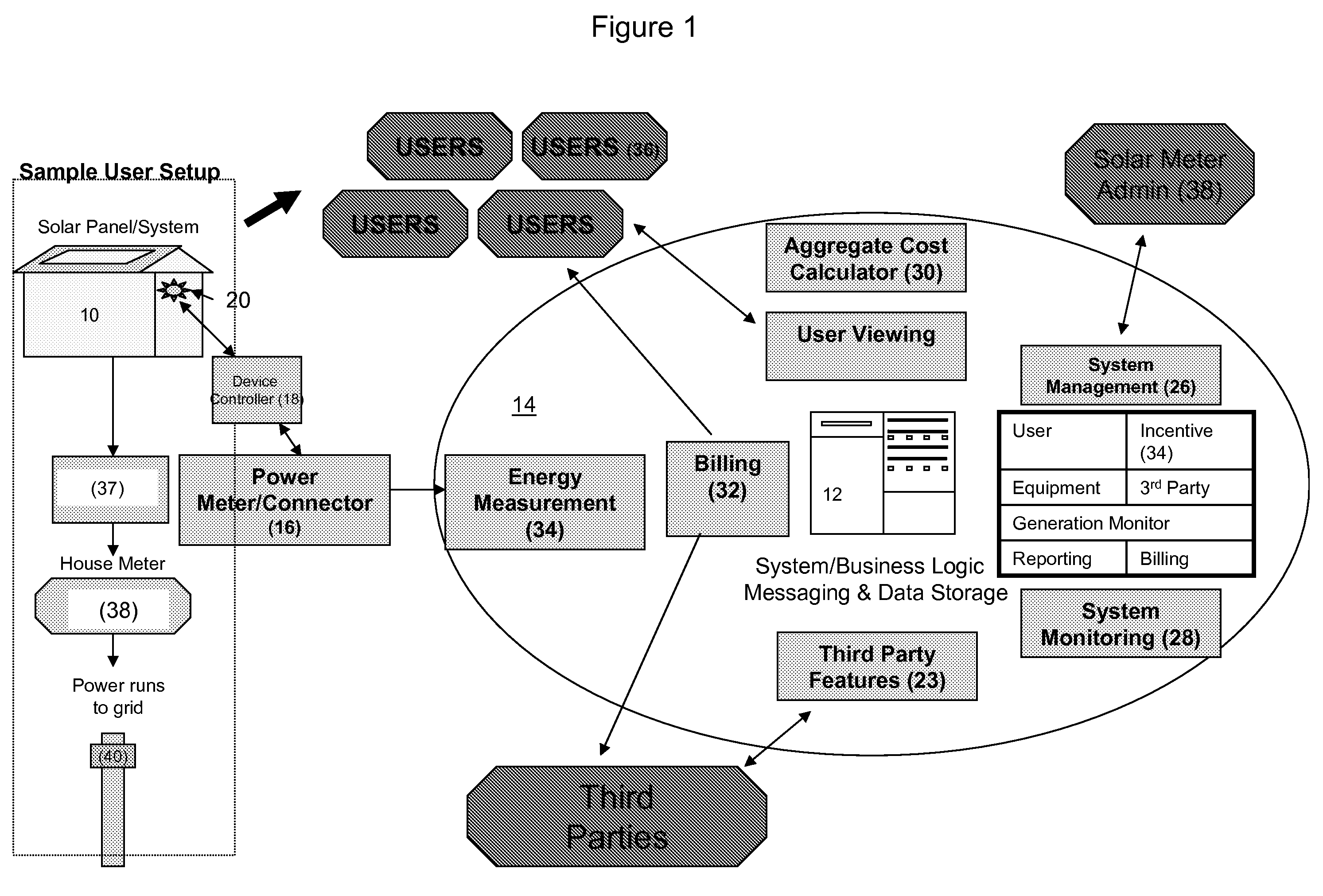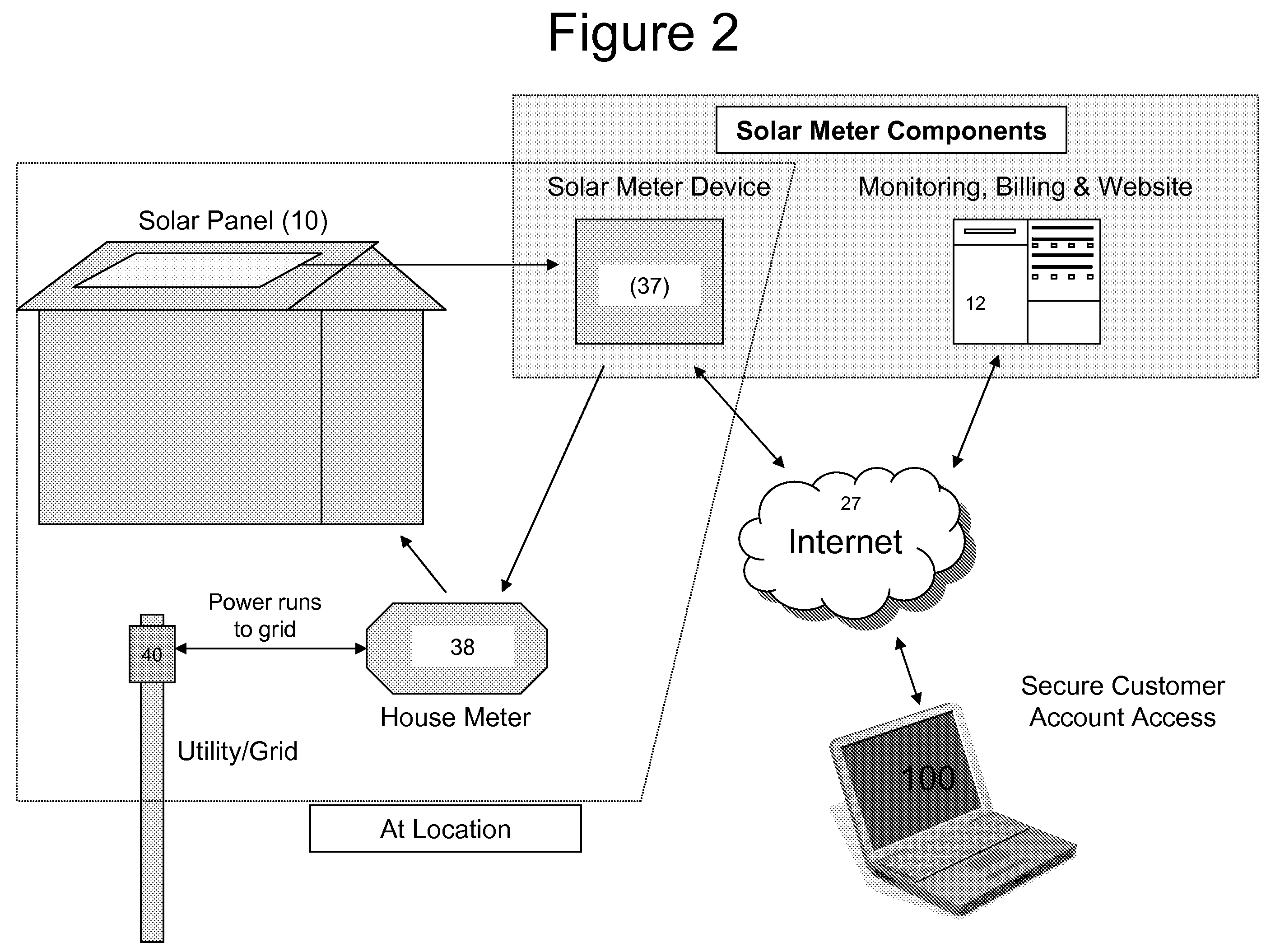Systems and methods for providing renewable power systems by aggregate cost and usage
a renewable power system and aggregate cost technology, applied in the field of systems and methods for providing renewable power systems by aggregate cost and usage, can solve the problems of high upfront cost of solar panels/systems in terms of fixed components, and high cost of photovoltaic panels (which generate electricity directly from sunlight)
- Summary
- Abstract
- Description
- Claims
- Application Information
AI Technical Summary
Benefits of technology
Problems solved by technology
Method used
Image
Examples
Embodiment Construction
[0018]The following detailed description is of the best currently contemplated modes of carrying out the invention. The description is not to be taken in a limiting sense, but is made merely for the purpose of illustrating the general principles of the invention, since the scope of the invention is best defined by the appended claims.
[0019]With reference to FIGS. 1-4, the present invention provides systems and methods for providing power at a consumer's premises and billing according to usage. The system comprising: at least one locally based renewable power system (10) at a consumer's location (12), wherein the at least one locally based renewable power system (10) has power system characteristics (e.g. equipment information (33)) and available incentives and the locally based renewable power system characteristics and available incentives are stored in a database (12); a set of customer variables maintained in a database (12); a central processing unit (14) in communication with t...
PUM
 Login to View More
Login to View More Abstract
Description
Claims
Application Information
 Login to View More
Login to View More - R&D
- Intellectual Property
- Life Sciences
- Materials
- Tech Scout
- Unparalleled Data Quality
- Higher Quality Content
- 60% Fewer Hallucinations
Browse by: Latest US Patents, China's latest patents, Technical Efficacy Thesaurus, Application Domain, Technology Topic, Popular Technical Reports.
© 2025 PatSnap. All rights reserved.Legal|Privacy policy|Modern Slavery Act Transparency Statement|Sitemap|About US| Contact US: help@patsnap.com



